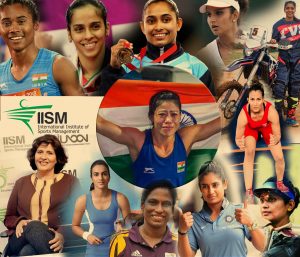As we observe the International Day of Women and Girls in Science on February 11th, it’s an opportune moment to explore the intersection of women, sport, and science in India. This synergy offers a unique lens through which we can assess progress, address challenges, and chart the future course for female athletes and scientists in a rapidly evolving landscape.
The Current Landscape in India
India has seen a significant surge in female athletic participation and achievement. Icons like PV Sindhu in badminton and the Indian women’s cricket team have become household names. However, the role of sports science, encompassing physiology, psychology, nutrition, and biomechanics, is critical yet underrepresented in the narrative of these successes. Despite the potential to revolutionize performance and longevity, sports science’s integration into women’s sports in India faces hurdles, notably in resource access, training, and scientific backing.
Women in sports science and coaching in India often face significant hurdles. Gender stereotypes and the undervaluation of women’s contributions in a traditionally male-dominated field impede their progress. Limited access to leadership roles and professional growth opportunities further exacerbate the issue. For female athletes, these barriers manifest in the form of insufficient scientific support and resources tailored to their specific needs.

Bridging the Gap with Science
To leverage sports science fully, India must focus on several key areas:
- Awareness and Education: Elevating understanding among athletes, coaches, and stakeholders about sports science’s benefits is crucial. Knowledge dissemination on tailored scientific approaches for women can significantly impact performance and injury prevention.
- Investment in Facilities and Research: Prioritizing sports science research with a focus on women’s needs is essential. India could benefit from more centers dedicated to sports science, facilitating the development of female-specific training and recovery protocols.
Learning from Global Leaders
The USA and Nordic Countries
In the USA, initiatives like the Wu Tsai Human Performance Alliance exemplify a commitment to advancing the understanding of female athlete biology. Programs led by professionals such as Dr. Katie Ackerman focus on optimizing health and performance through gender-specific research. In the USA, the Title IX legislation, enacted in 1972, has played a pivotal role in promoting gender equality in sports and education. This legal framework has increased female participation in sports and fostered a more inclusive environment for research and application of sports science tailored to female athletes. American universities and research institutions are leading in sports science research, with many studies focusing on injury prevention, performance optimization, and the psychological aspects of female athlete development. Organizations like the Women’s Sports Foundation actively advocate for equitable opportunities and support for female athletes, including access to the latest sports science resources and knowledge.
Nordic countries, known for their egalitarian values, invest heavily in sports science, ensuring female athletes receive equal access to scientific support and resources. This approach fosters an environment where female athletic performance can thrive alongside male counterparts, supported by comprehensive policies and research.
Australia
The Australian Institute of Sport (AIS) is renowned for its comprehensive support to athletes, including cutting-edge research in sports science tailored to women. Initiatives like the Female Performance & Health Initiative highlight the importance of addressing the unique physiological aspects of female athletes.
United Kingdom
UK Sport invests in programs specifically designed to increase the representation of women in coaching and sports science. The Women into High-Performance program aims to develop female coaches to elite levels, ensuring they receive the same opportunities and support as their male counterparts.
Female Athletes Turned Scientists
Several female athletes have transitioned into sports science, contributing valuable insights from their experiences. Their involvement emphasizes the importance of having athletes engaged in scientific research, as they bring a unique perspective that can lead to breakthroughs in training methodologies, injury prevention, and performance enhancement.

The Case for India
India stands to gain immensely by encouraging more athletes to pursue science. Integrating firsthand athletic experience with scientific research can yield tailored solutions that address the unique challenges faced by female athletes. This blend of expertise is crucial for developing advanced training, medical, and technological interventions that can elevate the performance and well-being of India’s female athletes.
The Path Forward
- Encouragement of Dual Careers: Promoting pathways for athletes to engage in scientific education and research alongside their sporting endeavors.
- Policy and Investment: Implementing policies that recognize and invest in sports science as a critical component of athletic development, focusing on gender-specific research and facilities.
- International Collaboration: Learning from global best practices and fostering partnerships with institutions and countries leading in sports science.
- Celebrating Role Models: Highlighting the achievements of women who excel in both sports and science to inspire future generations.
- Targeted Scholarships and Education Programs: Introducing scholarships and educational programs for women in sports science and coaching can help increase their representation and expertise in these fields. Policies must ensure equal access to sports science education and careers for women. Scholarships, internships, and mentorship programs can encourage more women to pursue sports science, leading to a diverse pool of experts dedicated to advancing women’s sports
As we celebrate the International Day of Women and Girls in Science, let’s commit to bridging the gap between sport and science for women in India. By drawing inspiration from global initiatives and focusing on tailored investments and policies, India can pave the way for a new era of sustainable, inclusive, and scientifically informed sports development. This holistic approach will not only enhance the performance and health of female athletes but also ensure that women are leading and innovating in the sports science domain for generations to come.




